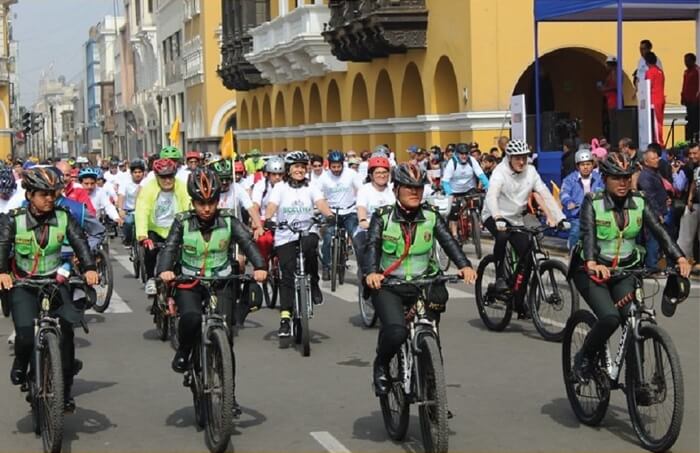The future of work after COVID-19 looks significantly different. The pandemic has accelerated trends in remote work which has the potential to help tourist destinations recover economically by diversifying visitors. Remote workers, compared to tourists, have extended stays, return more frequently and recommend destinations within digital nomad communities. Because digital nomads visit destinations for longer periods they are less likely to be put off my testing and quarantine periods. They also, according to a recent report by ATTA, spend 35% of their income locally.
What is remote work?
A remote worker, according to the Cambridge Dictionary, is:
“The practice of an employee working at their home, or some other place that is not an organisation’s usual place of business.”
This is different from digital nomads who, according to HubSpot are:
“Remote workers who usually travel to different locations.”
Growth of the digital economy and digital nomads
Since improved internet connection made remote work easier and the digital economy has grown significantly. The trend was already gathering force and COVID-19 has had a paradoxical impact. On the one hand, many organisations and individuals have seen the benefits of remote work, shifting our work firmly out of the office. Conversely, travel restrictions have severely limited the adventures of digital nomads and have temporarily put some destinations out of action.
A future of digital nomads’ presentation predicts that there could be 1 billion digital nomads by 2035 based on the exponential rise of internet speeds and the fall in homeownership. These two factors, combined with a reduction in travel costs, will create the perfect conditions for digital nomads to thrive. Given the severe impact of COVID-19 on the travel industry, it remains to be seen if prices will continue their downwards trend and if an increase will stem the enthusiasm to travel.
Benefits of welcoming digital nomads
There are many benefits to designing specific programs and facilities to welcome digital nomads. Remote workers tend to have diverse work portfolios having worked across several countries, cultures and industries. They tend to be motivated individuals and are cited as being 13% more productive. A strong work ethic combined with diverse work experience can be beneficial for launching innovative and entrepreneurial hubs which drive investment and economic performance for the host territory.
On average, digital nomads are economically stable, and you can ensure this through your visa requirements. Tech Radar estimates the average annual earnings of nomads at between $50,000 – 100,000. This can be an effective way to bolster your economy especially if reduced tourism revenue has led to a loss of income. Also, this particular sector offers long-term visitors compared to tourism. Quarantine periods, as well as seasonal variations, are less likely to impact their movement or the popularity of your country or location as a destination. Remote workers’ motivations for their stay will be different from the average tourist.
The impact of COVID-19 on the remote worker economy
COVID-19 has accelerated what was already a growing trend for remote working. Arranmore, an island with a population of 469 people, has significantly invested in the IT infrastructure of the island to improve the lives of residents, but also to retain younger residents and attract remote workers. Modam on Arranmore is Ireland’s first offshore shared digital workspace and is part of their investment plan to attract new residents to the island.
Transitioning your focus from tourism to remote working is a great way to diversify your economy. Remote workers can provide a more secure and stable revenue stream as well as being more likely to invest back into the communities they live in. Even though vaccines are becoming available, a fundamental shift to remote work has now happened and this change will be permanent. This has created the largest remote workforce in our history. This is a very real opportunity for islands that are only going to continue growing. Like with anything, there is going to be a first-mover advantage which is why we recommend islands start considering their approach to this growing demographic. When PriceWaterhouseCoopers ran a poll, 32% of those surveyed said they’d prefer never to return to the office.
Thinking about COVID-19 and digital nomads
During our remote worker webinar, we wanted to know the approach of different islands with regard to their remote worker programs and COVID; you can watch the specific discussion below:
It’s clear from the different approaches that easy and available testing and quarantine periods are essential not only to encourage visitors but to also protect the local community. ‘Green corridors’ are an idea for the future as the number of vaccinated travellers rises.
The future of remote working for islands
There is a clear opportunity for islands to strengthen their economies by creating programs to attract remote workers. The success of these initiatives will depend on your ability to integrate nomads within the local community and to provide a solid infrastructure to support their requirements.
Above we’ve detailed the key considerations and if you’d like to discuss creating a remote worker program in more detail we recommend getting in touch.

Island Innovation is a social enterprise and digital media company at the intersection of sustainable development and communications, offering specialised services across various sectors. We bring together the private sector, government, utilities, NGOs and universities to advance innovation for sustainability and prosperity in islands worldwide.














Hello. I am planning an exploratory trip to Dominica in December. I would like to learn more about the Digital Nomad community in Dominica. Do you have statistics on this remote work program. I would like to connect with the Dominica nomad community?